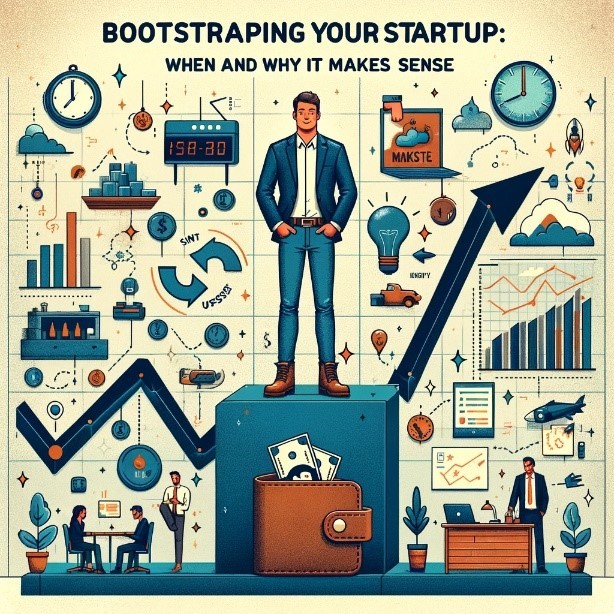In the world of startups, the question of funding is important. While venture capital and angel investment are popular routes and remain a compelling and often rewarding approach. This article explores the essence of bootstrapping, highlighting when and why it makes sense for startup founders.
Connect with Allied Legal’s startup lawyers on on 03 8691 3111 or drop us an email at hello@alliedlegal.com.au to discuss the legal considerations when looking at funding options for your business.
What is Bootstrapping?
Bootstrapping a startup means relying on minimal resources and personal funds to start and grow your business. Unlike external funding options, bootstrapping demands a focus on generating immediate revenue and sustainable growth, often leading to a more gradual but stable business development.
The Advantages of Bootstrapping:
Complete Ownership and Control: When you bootstrap, you retain full ownership and decision-making power over your business. This autonomy allows for a more flexible and personal approach to business strategy.
Forced Efficiency: Limited resources mean that bootstrapped startups have to prioritise efficiency and profitability from the outset, often leading to more sustainable business models.
Customer-Focused Growth: Bootstrapped businesses typically grow in response to customer needs, as their revenue is directly tied to customer satisfaction and market demand.
Avoiding Overvaluation: Companies that grow through external funding can sometimes become overvalued, which poses risks for sustainable growth. Bootstrapping keeps valuations realistic and tied to actual business performance.
Personal Satisfaction: There’s a unique sense of achievement in building a business from the ground up using your resources and efforts.
When Does Bootstrapping Make Sense?
In Early Stages: When you’re validating your business idea and model, bootstrapping allows for more agility and personal learning.
For Lifestyle Businesses: If your goal is to build a business that supports a particular lifestyle or offers long-term income rather than rapid growth, bootstrapping is ideal.
Industries with Low Initial Capital Requirements: Businesses that don’t require heavy upfront investment (like digital services) are well-suited for bootstrapping.
When Maintaining Control is Crucial: For entrepreneurs who wish to retain creative and strategic control, bootstrapping is the best route.
The Challenges of Bootstrapping:
Limited Resources: Bootstrapping means working with limited finances, which can constrain growth and the ability to scale quickly.
Increased Personal Risk: Using personal savings or income for business funding increases the individual financial risk.
Time to Market: It might take longer to reach the market or scale due to financial constraints.
Workload and Stress: Bootstrappers often wear multiple hats, leading to a higher workload and potential burnout.
Best Practices for Successful Bootstrapping:
Lean Operations: Keep your operations lean and focus on essential expenses only.
Customer Revenue: Aim to generate revenue early and reinvest it back into the business.
Smart Hiring: Initially, opt for a small, but efficient and multi-talented team.
Focus on Cash Flow: Prioritise activities that maintain positive cash flow.
Plan for Scalability: Even when bootstrapping, have a plan for scaling your business when the opportunity arises.
Bootstrapping is not just a means of funding but a mindset that shapes the foundation of a startup. It’s about building a business grounded in reality, focused on efficiency, and responsive to customer needs. While it presents challenges, the rewards of bootstrapping are substantial – from maintaining control over your vision to developing a sustainable business model. For many entrepreneurs, bootstrapping is not just a financial decision, but a strategic choice that aligns with their vision for their startup’s future.
Contact Allied Legal’s Startup Lawyers
Connect with us at Allied Legal on 03 8691 3111 or drop us an email at hello@alliedlegal.com.au to discuss the legal considerations when looking at funding options for your business.
The insights presented in this article are derived from ‘The Pros and Cons of Bootstrapping Your Startup’ written by Alejandro Cremades and published to Forbes on 13 January 2019.






